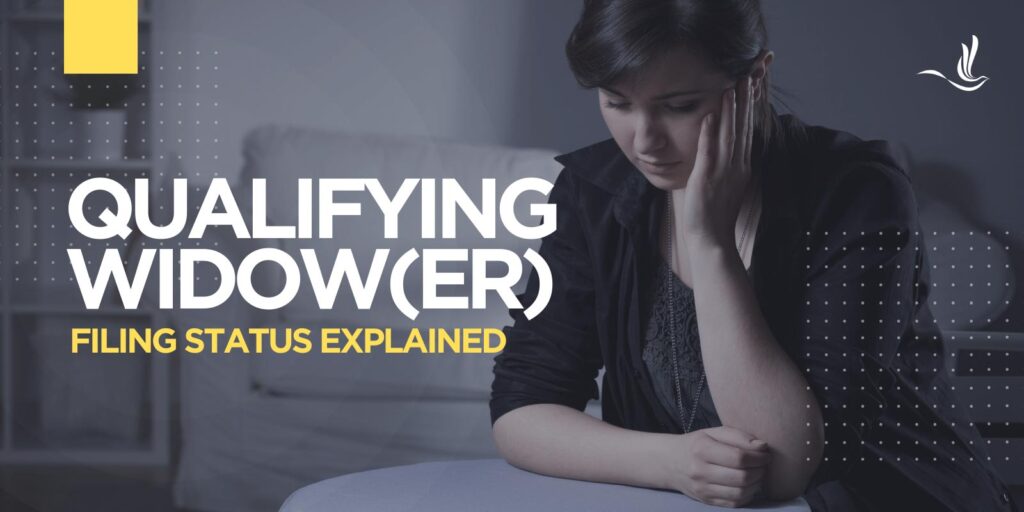
The loss of a spouse is a challenging and emotional experience, and during such times, financial matters can add an extra layer of complexity. The tax implications of losing a spouse are among the many considerations that individuals may face. One important filing status that may apply to widows and widowers is the qualifying widow(er) filing status. In this article, we’ll cover certain tax benefits and considerations of the qualifying widow(er) filing status that can help ease the financial burden during a difficult period.
Qualifying Widow(er) Eligibility
The qualifying widow(er) filing status is a tax-filing option available to individuals who have lost their spouse. You can sue this filing status for the two tax years after the death of your spouse, not including the year of their death. You can still file as married filing jointly in the tax year of their passing. To qualify for the qualifying widow(er) status, several conditions must be met.
- You must have been eligible to file a joint tax return with your spouse in the year of their death.
- You must not have remarried before the end of the tax year of their death.
- You must have a dependent child, stepchild, or adopted child. Foster children are not eligible.
- You must have paid more than half the cost of maintaining a home for the entire tax year. This home must have been the principal residence of the qualifying child.
If you do not meet all of the above criteria, you cannot use the qualifying widow(er) filing status. That said, you’ll likely need to file as a single individual. If your child is a foster child, you may file as Head of Household.
Benefits of Qualifying Widow(er) Filing Status
The main benefit of the qualifying widow(er) filing status is that it allows you to receive the same tax rates as the married filing jointly status. These are generally more favorable than the rates for single filers, making it the better choice. In addition, the standard deduction for qualifying widow(er) is the same as that for married individuals filing jointly. This means they will get to enjoy a higher standard deduction than a single filer receives. For instance, single filers in tax year 2024 have a standard deduction of $14,600 while married couples filing jointly can deduct $29,200. Finally, the taxpayer may be eligible for certain tax credits and deductions that are typically available to married couples filing jointly.
Considerations and Limitations
As mentioned, there are several limitations for the qualifying widow(er) filing status. Perhaps the main limitation is the time limit of which you can claim the status. It is available for the two years following the year of the spouse’s death. After this period, the taxpayer may need to file as a single taxpayer or as head of household if they meet the criteria. Another disqualifier for using the qualifying widow(er) status is remarriage. If the taxpayer remarries during the two-year period, they are no longer eligible for the status and must choose a different filing status. Finally, taxpayers should ensure that their qualifying child meets all the requirements for this status. In addition to the requirements already listed, the child must not have gross income of $4,400 or more in 2024. They also do not qualify if they filed a joint return. Understanding these criteria is crucial to determining eligibility for the filing status.
Tax Help for Qualifying Widow(er)s
The qualifying widow(er) filing status provides a tax benefit for individuals who have lost their spouses and have a dependent child. By understanding the eligibility criteria and the potential advantages, widows and widowers can navigate the complexities of tax filing with more confidence during a challenging time. Seeking advice from a tax professional can be valuable in ensuring that all requirements are met, and that the taxpayer maximizes the available tax benefits. While financial matters may be daunting after the loss of a spouse, utilizing the qualifying widow(er) filing status can help alleviate some of the burdens and provide a measure of financial relief. Optima Tax Relief is the nation’s leading tax resolution firm with over $1 billion in resolved tax liabilities.
If You Need Tax Help, Contact Us Today for a Free Consultation